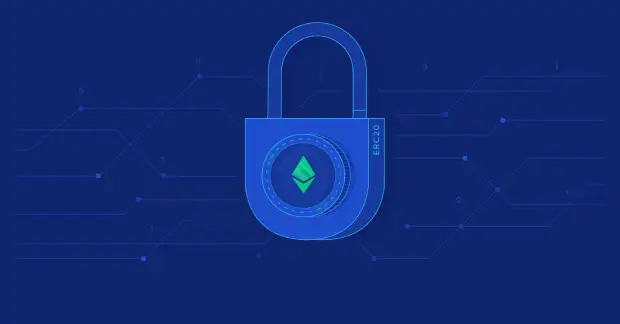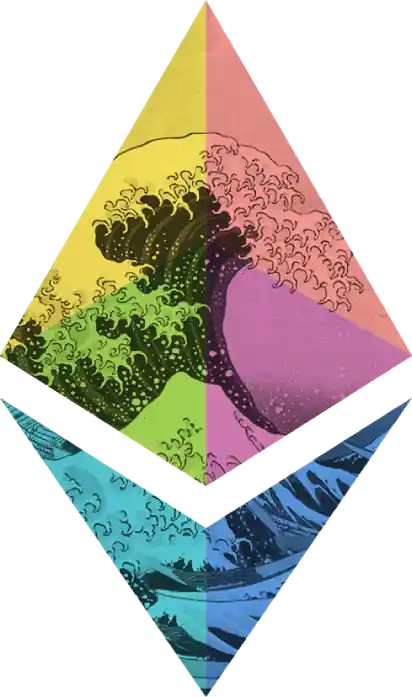12 min to read.
Buy ERC20 token or not in 2022? Explanation & Recommendations
What does ERC20 Tokens actually do? ERC20 Tokens list

Table of Content
- Buy ERC20 token or not in 2022? Explanation & Recommendations
- What are ERC20 tokens and what is behind the ERC20 token standard project?
- Why do developers use ERC20 tokens
- History of ERC20
- ERC20 standard alternatives
- Features of ERC20 tokens
- Facts and data: ERC20 standard at a glance
- What makes ERC20 so special?
- ERC20 Wallet: How do I keep my ERC20 tokens safe?
- ERC20 mining - is that possible?
- FAQ
Buy ERC20 token or not in 2022? Explanation & Recommendations
The ERC20 Ethereum Token Standard describes how fungible tokens can be created that are compatible with the Ethereum network. As a cryptocurrency, Ether or Ethereum enables the creation of many applications that don't rely on any intermediary services, unlike most traditional applications.
Almost every aspect of the cryptoeconomic ecosystem has been infiltrated by the ERC20 standard. There are a large number of popular tokens, such as Tether, the stablecoin, and Chainlink, the leading oracle service, that are actually ERC20 tokens under the hood. In this article, we shall examine in more detail whether ERC20 tokens are worth buying and what the future potential of the ERC20 token project may be.
What are ERC20 tokens and what is behind the ERC20 token standard project?
Tokens based on the ERC20 standard are fungible and compatible with the Ethereum network, as we have discussed previously. Unlike conventional applications, ERC20-based projects and applications do not require intermediary services, unlike those based on conventional tokens.
- It is considered to be the most important token standard in the entire cryptocurrency ecosystem and is used by a large number of popular tokens.
- Some prominent examples include Tether, a stablecoin, and Chainlink, a cryptocurrency.

The ERC20 tokens are digital assets that can be created by anyone, but are most often created by businesses and organizations. Each token has a different purpose. Voting rights on decisions affecting a project's future, or rewarding clients for completing certain tasks, are just a few examples.
Due to the standardization of the ERC20 framework, ERC20 tokens can be created with interoperability with each other as well as with ERC20 compatible services such as MyEtherWallet and MetaMask.
Why do developers use ERC20 tokens
Following is a list of some of the issues tokenizers encounter when creating projects from scratch without leveraging the ERC20 standard:
- Smart Contracts: Smart contracts play an integral role in deciding the overall supply of tokens, how those tokens will be distributed, what the issuance schedule looks like, and many other factors. In addition, they are responsible for performing important functions such as querying holder accounts and facilitating the transfer of tokens. Creating smart contracts is a time-consuming and complicated process that usually requires a team of programmers with specialized expertise. If the smart contracts are not written correctly, this can be very expensive and have devastating consequences. ERC20 tokens are compatible with existing smart contracts, so they do not require rewriting.
- It is necessary to endure additional work to make tokens compatible with third-party services such as wallets and exchange platforms if they are not created using a well-integrated standard such as the ERC20 framework. Conversely, the ERC20 tokens can be directly integrated into wallets and most exchanges.
History of ERC20
The Ethereum community created the ERC20 standard in 2015, and the standard was officially recognized in September 2017. The process for creating such a standard in Ethereum begins with the submission of an Ethereum Improvement Proposal (EIP) which describes the new functionality as well as its specific protocols and standards. Afterwards, an EIP is reviewed, approved, amended, and finalized by a committee - at which point it becomes an ERC.
Ethereum's smart contracts and other functions must then comply with one of the approved standards. The ERC20 standard is perhaps the best known and most widely used of these ERC standards, but it is by no means the only one.
ERC20 standard alternatives
Even though ERC20 has received widespread support in the form of new tokens that conform to its standards, there are many in the developer community who believe it is limited or buggy in one or more aspects. This has resulted in the development of multiple alternative token standards since the development of ERC20. One of these is ERC223 , which addresses a problem relating to the approval and propagation elements of ERC20.5.
A second alternative to ERC20, ERC621, has the same basic features as ERC20, as well as the ability to increase or decrease the supply of tokens. On the other hand, ERC827 allows holders to authorize third parties to issue tokens on their behalf. There is some overlap between these new protocol proposals and ERC20 to some extent.
Features of ERC20 tokens
The fact that these tokens often offer many useful features is one reason why many investors purchase ERC20 tokens. ERC-20 tokens can have a variety of functions and applications depending on the project. We have listed some of the most popular application areas and ERC20 token functions below:
- Crowdfunding : Ethereum app developers sometimes decide to raise funds by means of crowdfunding. In return, investors will receive newly minted tokens at wholesale prices prior to the launch date. These activities are known as ICOs (Initial Coin Offerings).
- Voting rights : ERC20 tokens may be used to vote on project decisions. A person who holds more tokens has greater influence over an election.
- Represent physical objects : A token issued by ERC20 can represent ownership of a physical asset, such as gold. It is commonly used in stablecoins that reflect the value of a fiat currency. For example, Tether is a popular ERC-20 stablecoin.
- Transaction Fees : Every Ethereum transaction (including token transactions) can be accompanied by a fee. If the network is congested, a fee - known as gas - may be necessary to expedite the transaction. Users will be charged for gas.
- New Features: Developers sometimes require additional features from a token. Adding new features to tokens based on the ERC20 standard is relatively straightforward.
Facts and data: ERC20 standard at a glance
| developer | Ethereum Foundation |
| Siacoin headquarters | Zug, Switzerland |
| persons | Vitalik Buterin and Gavin Wood |
| First ERC20 transaction | Aug 07, 2015 |
What makes ERC20 so special?
Ethereum Request for Comment (ERC) is an acronym for Ethereum Request for Comment, and it is similar to the Request for Comment method developed by the Internet Engineering Task Force to communicate essential technical information to a community of developers and users.
In the cryptocurrency space, ERC20 has been a leading method for creating new tokens for some time. It was particularly popular among crowdsale companies and initial coin offerings (ICOs). As a result, tens of thousands of tokens have been crafted that work in accordance with the ERC20 standard.
Among the many applications of ERC20 smart contracts, many have been used to create non-fungible tokens (NFTs) for the purpose of initial coin offerings (ICOs). ICOs are the cryptocurrency equivalent of initial public offerings (IPOs) on the stock market. In order to raise funds from investors and early adopters for the development of a new cryptocurrency, decentralized app, or service, a crypto company launches an initial coin offering (ICO).
ERC20 Wallet: How do I keep my ERC20 tokens safe?
Once you understand what to look for, selecting the best ERC20 wallet is relatively simple. There are several ERC20 wallets available, and investors should consider the following factors when determining which wallet to use:
- Simple and user-friendly interface.
- The wallet must give you full control over the private keys.
- The wallet must be as compatible as possible.
- The wallet should have backup options
A ERC20 wallet is nothing more than a digital wallet for managing all Ethereum tokens. This ERC20 wallet facilitates the storage and the transfer of Ether cryptocurrency and ERC20 tokens. Managing these wallets is a simple process.

In addition to offering the highest level of security, hardware wallets offer a wide range of features. eToro, our test winner, has an integrated ERC20 wallet that is also compatible with many other cryptocurrencies.
ERC20 mining - is that possible?
The majority of investors should be familiar with Bitcoin and understand how it is mined: through proof-of-work mining. In other words, the currency is created and controlled solely by mathematics, and there is no central mint. The potential for human corruption is eliminated by eliminating a central mint and human intervention.
Code even controls the inflation rate. The ability to mine ERC20 tokens varies from token to token. Ethereum tokens, for example, can still be mined. The majority of ERC20 tokens are not mined and have a central owner.
ERC20 pros and cons
While ERC20 is currently the most popular crypto standard, it is limited and flawed in some way. Consider the following pros and cons of ERC20:
Benefits of ERC20
- Data security through many years of development
- Smart Contracts
- Supported by wallets and exchanges
- A standard that is recognized worldwide
- Less development work
- Enables numerous functions
Disadvantages of ERC20
- High gas costs
- Has some known bugs
FAQ
What is ERC20?
Ethereum's blockchain utilizes the ERC20 standard for scripting. A technical standard specifies a set of rules and actions an Ethereum token or smart contract must follow, as well as steps needed to implement them. The ERC20 standard contains hundreds of tokens.
What is the difference between Ethereum and ERC20?
Some aspects of ERC20 are similar to those of Bitcoin, Litecoin, and other cryptocurrencies. ERC20 tokens are digital assets that are based on blockchain technology and have value. In contrast, ERC20 tokens do not run on their own blockchain, but are issued on the Ethereum network.
What is an ERC20 wallet?
The Ethereum tokens are managed using ERC20 wallets, which are digital wallets. These ERC20 wallets store Ether cryptocurrencies and ERC20 tokens, which are useful for making transactions. They are easy to use and are quick.
ERC20 course development
This course does not cover ERC20, since it is a standard for many different cryptocurrencies. In spite of this, many investors equated Ethereum's success and trajectory with that of ERC20. Since its inception, Ethereum has grown from a few cents to over four thousand dollars.
Top 50 ETC20 Coins
| BNB (BNB) | Chain (XCN) | BAT (BAT) |
|---|---|---|
| Tether USD (USDT) | Uniswap (UNI) | BitDAO (BIT) |
| USD Coin (USDC) | VeChain (VEN) | |
| Binance USD (BUSD) | Frax (FRAX) | Tether Gold (XAUt) |
| Dai Stablecoin (DAI) | Wrapped Decentraland MANA (wMANA) | Zilliqa (ZIL) |
| HEX (HEX) | TrueUSD (TUSD) | AMP (AMP) |
| Wrapped BTC (WBTC) | Wrapped Filecoin (WFIL) | Gala (GALA) |
| Theta Token (THETA) | KuCoin Token (KCS) | EnjinCoin (ENJ) |
| SHIBA INU (SHIB) | SAND (SAND) | Fei USD (FEI) |
| Bitfinex LEO Token (LEO) | Pax Dollar (USDP) | Synthetix Network Token (SNX) |
| stETH (stETH) | HuobiToken (HT) | Wrapped Celo (wCELO) |
| Matic Token (MATIC) | Huobi BTC (HBTC) | HoloToken (HOT) |
| ChainLink Token (LINK) | Graph Token (GRT) | XinFin XDCE (XDCE) |
| Cronos Coin (CRO) | BitTorrent (BTT) | Nexo (NEXO) |
| OKB (OKB) | Decentralized USD (USDD) | HarmonyOne (ONE) |
| Quant (QNT) | Maker (MKR) | Paxos Gold (PAXG) |
| Chiliz (CHZ) | Fantom Token (FTM) | |
| Crypto.com Exchange | BitTurk | Nominex |
| OKX | ZebPay | ZBG |
| ProBit Global | EXMO | BitUBU |
| AscendEX (BitMax) | EQONEX | Zonda (BitBay) |
| ZB.COM | Giottus | Folgory |
| eToroX | NiceHash | Korbit |
| Okcoin | LiteBit.eu | BitWell |
| Binance DEX | Vauld | Bitcoiva |
| WazirX | WhiteBIT | Felixo |
| Tokocrypto | Biconomy Exchange | BigONE |
| Indodax | XT.COM | CoinW |
| Upbit | Paribu | Hotcoin Global |
| AAX | Zipmex | Aryana |



